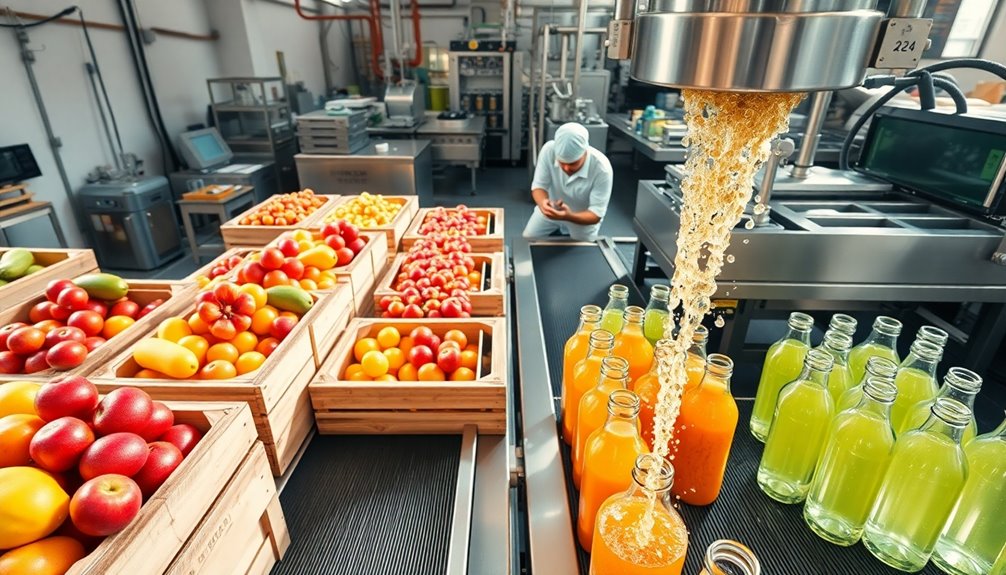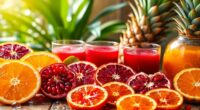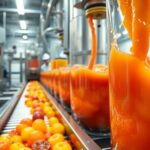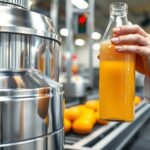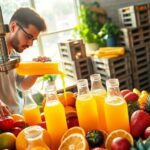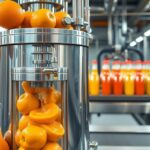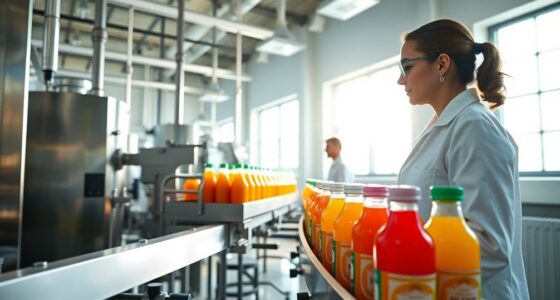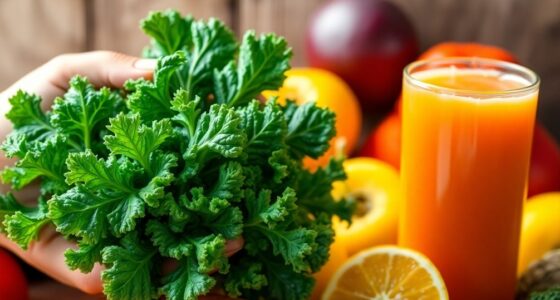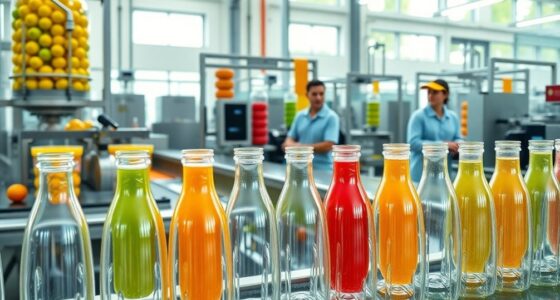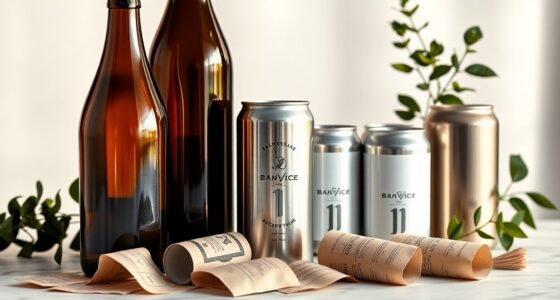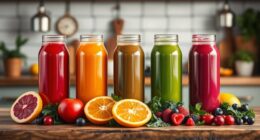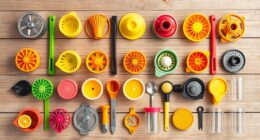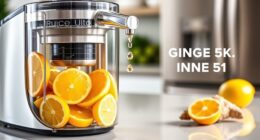To achieve success in commercial juice production, you need to master five essential steps: harvesting at peak maturity, washing and selecting quality ingredients, using the right juice extraction methods, efficient bottling processes, and preparing products for High Pressure Processing (HPP). Each step guarantees you deliver high-quality, nutrient-rich juices that appeal to health-conscious consumers. Follow these guidelines closely, and you'll learn valuable practices to enhance your juice operation further.
Key Takeaways
- Harvest fruits and vegetables at peak maturity to optimize yield and quality for juice production.
- Wash, select, and calibrate ingredients to enhance safety and maximize juice yield while preserving nutritional content.
- Choose appropriate juice extraction methods to maintain flavor and nutrient integrity, particularly cold-pressing for non-citrus fruits.
- Utilize food-grade bottles and efficient bottling machines for safe, high-speed production, ensuring quality standards.
- Apply High Pressure Processing (HPP) to extend shelf life while preserving vitamins and eliminating harmful microorganisms.
Harvesting
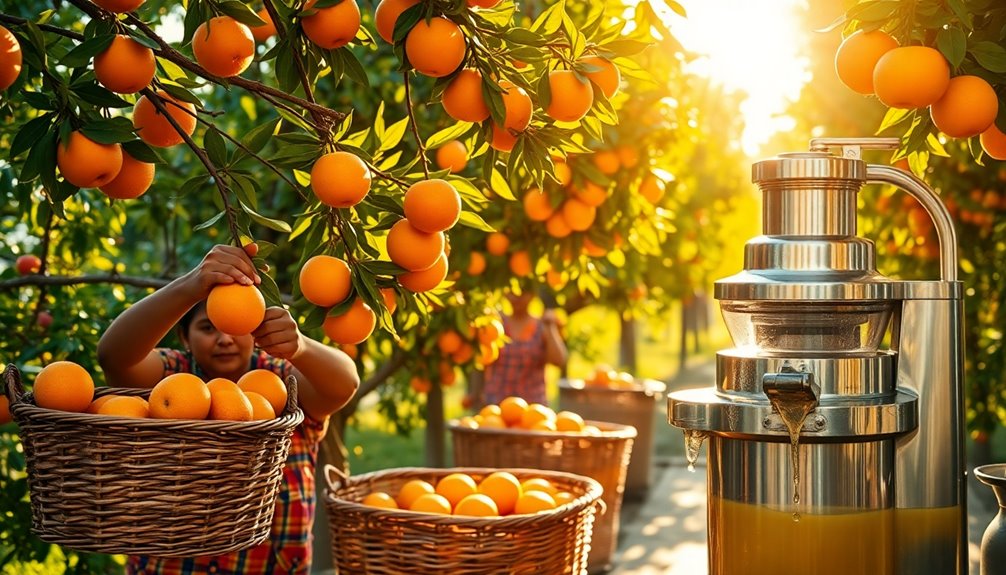
When you harvest fruits and vegetables at their peak maturity, you not only maximize yield but also guarantee high-quality juice production. This practice is crucial for ensuring food safety and maintaining quality assurance throughout your juicing business.
By selecting raw ingredients that are at ideal maturity, you reduce the likelihood of incorporating suboptimal produce, which can negatively impact flavor and nutrition. Quick processing of harvested items preserves essential vitamins, highlighting the importance of timely handling.
Additionally, implementing best practices during harvesting minimizes damage to the fruits, preventing bruising and spoilage. This approach not only enhances the quality of your juice but also promotes sustainability by reducing waste. Furthermore, high-quality juice can provide numerous health benefits, including increased vitamin intake and improved digestion.
Prioritizing these factors will lead to a more efficient and successful juice production operation.
Washing, Selection, and Calibration
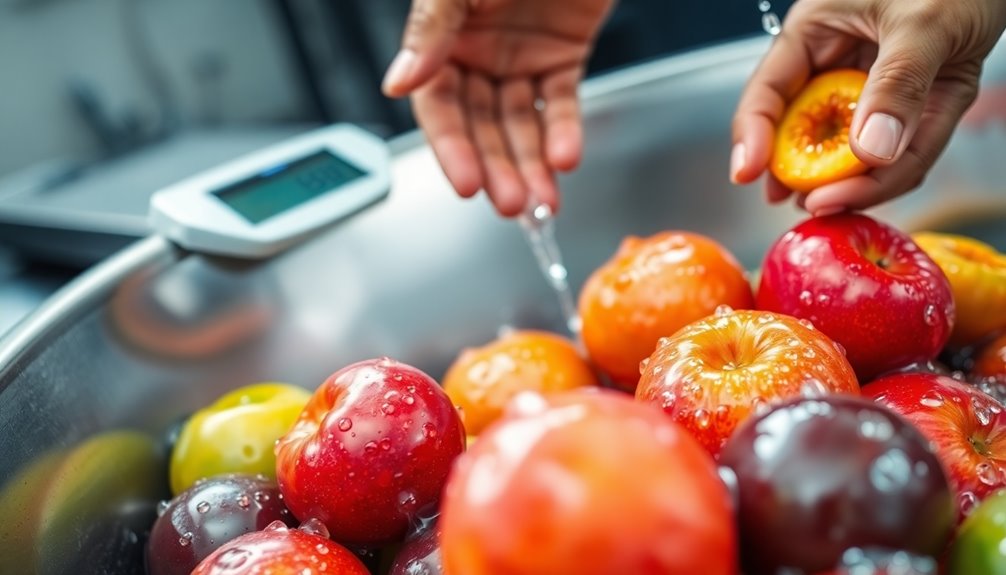
To guarantee the highest quality in your juice production, washing, selecting, and calibrating your fruits and vegetables are critical steps you can't overlook.
- Washing removes dirt, dust, and some pesticides, enhancing product safety.
- Selection guarantees you reject suboptimal fruits, preserving the final juice quality.
- Calibration, especially for citrus, maximizes juice yield while preventing undesirable oil extraction.
Effective washing and selection can extend the shelf life of your produce, maintaining its nutritional content. Additionally, proper washing techniques can help retain the antioxidants that combat skin aging found in certain fruits and vegetables.
Implementing a thorough washing and selection process is essential for achieving high standards of quality assurance in commercial juice production.
Juice Extraction

Juice extraction plays an essential role in determining the quality and flavor of your final product, as different methods suit various types of fruits and vegetables.
For instance, citrus fruits are typically squeezed to avoid undesirable oil flavors, while other fruits and vegetable juices benefit from cold-pressed techniques that preserve nutrients. Incorporating ingredients like chia seeds can enhance the nutritional profile of your juice, providing added fiber and omega-3 fatty acids.
Selecting the right extraction methods is vital; using equipment like a commercial cold press juicer can enhance yield while maintaining taste.
A pulping machine efficiently removes stones from fruits like peaches, ensuring smoother consistency.
Bottling Process

As the final step before distribution, the bottling process guarantees your juices are securely packaged for consumer enjoyment.
In your production facility, you'll want to use only food-grade bottles that don't require cleaning, ensuring product safety and quality.
Hands-free pressure capping devices enhance efficiency, allowing for quicker sealing while minimizing contamination risks.
With bottling machines featuring up to 120 filling heads, you can handle up to 1,000 units per minute, considerably boosting production efficiency.
- Utilize food-grade bottles for safety
- Implement pressure capping devices for efficiency
- Choose reliable manufacturers like Zumex and Goodnature
- Maximize output with advanced bottling machines
This streamlined approach in juice processing sets the foundation for successful commercial juice production. By optimizing each phase of the operation, from sourcing fresh fruits to bottling the final product, manufacturers can enhance efficiency and reduce waste. Understanding the industrial juice manufacturing process steps is crucial, as it allows companies to implement best practices that ensure consistency in flavor and quality while meeting consumer demand. Ultimately, this method not only boosts profitability but also contributes to sustainable practices within the industry.
Product Ready for HPP
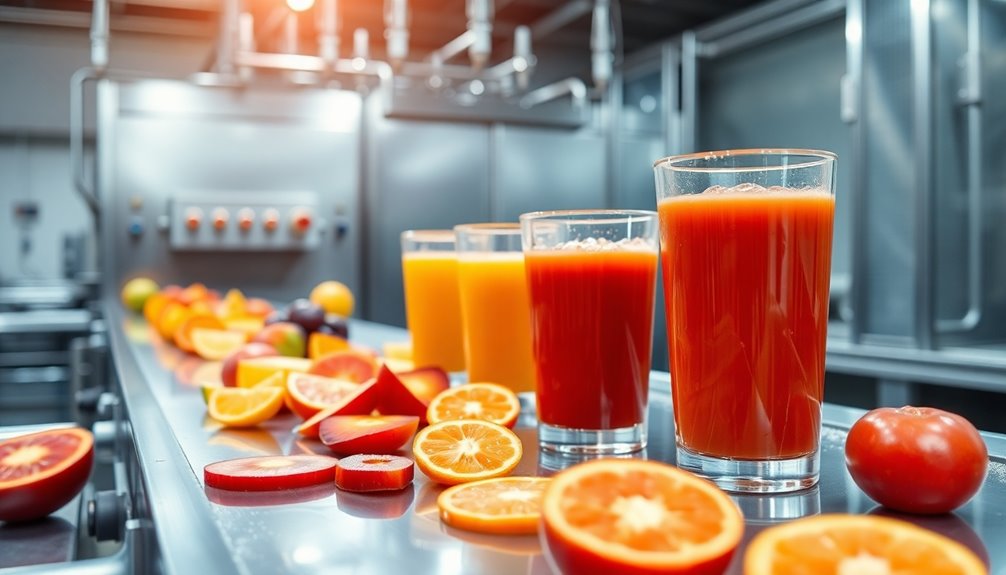
Once your juices are bottled, they're primed for High Pressure Processing (HPP), a game-changing technology that extends shelf life without heat.
This cold pasteurization technique not only preserves the vitamins and nutrients of your fresh juices but also guarantees product safety by eliminating harmful microorganisms like Salmonella and E. coli.
As you navigate health regulations, incorporating HPP juice into your juice production can greatly enhance your appeal to health-conscious consumers.
By using advanced juice bar equipment, you can meet dietary needs while minimizing risks associated with product recalls.
The rising demand for minimally processed HPP juices positions your brand favorably in a competitive market, capturing consumer interest and expanding your opportunities.
Furthermore, fresh ingredients can significantly boost the flavor and nutritional value of your HPP juices, appealing even more to health-focused customers.
Embrace HPP for a successful juice venture!
Frequently Asked Questions
What Are the Steps of Juice Production?
To produce juice, you start with harvesting fruits and veggies at their peak for the best quality.
Next, wash and select them, removing any dirt or subpar produce.
Then, extract the juice using methods like squeezing or pressing, guaranteeing you maintain flavor.
After that, bottle the juice in food-grade containers.
Finally, apply High Pressure Processing (HPP) to extend shelf life and guarantee safety without compromising taste.
What Are the Steps for Making Juice?
To make juice, start by harvesting ripe fruits and vegetables.
Next, wash them thoroughly to remove any dirt or pesticides, then select only the best ingredients.
Extract the juice using methods suited for each fruit, like squeezing or pressing.
After extraction, mix the juice to achieve the right flavor and consistency.
Finally, pasteurize the juice to guarantee safety, and bottle it in food-grade containers, ready for enjoyment!
How Can I Make My Juice Business Successful?
To make your juice business successful, focus on sourcing high-quality fruits and veggies.
Guarantee you're harvesting at peak maturity for the best flavor and nutrition. Wash and select your produce carefully to maintain safety and quality.
Use advanced extraction methods like cold pressing to retain nutrients. Invest in efficient bottling systems to minimize contamination.
Finally, create a strong marketing strategy targeting health-conscious consumers, utilizing e-commerce to boost your reach and sales.
Is HACCP Required for Juice?
Yes, HACCP is required for juice production, especially if you're selling across state lines.
You need to identify hazards, establish critical control points, and maintain monitoring procedures to guarantee your juice is safe. Without a HACCP plan, you risk contamination, which could jeopardize your business.
By implementing these practices, you enhance compliance, build consumer trust, and gain a competitive edge.
Prioritize safety to guarantee your juice business thrives in the market.
Conclusion
In the vibrant dance of juice production, each step is a crucial note in a symphony of flavor. You've harvested nature's bounty, washed away the past, and extracted pure essence, bottling it with care. As your product awaits HPP, it's like a masterpiece poised for its grand revelation. With these five essential steps, you're not just creating juice; you're crafting liquid sunshine that bursts with freshness and energy, ready to quench thirsts and delight taste buds everywhere.
Cindy thoroughly researches juicing trends, techniques, and recipes to provide readers with practical advice and inspiration. Her writing style is accessible, engaging, and designed to make complex concepts easy to understand. Cindy’s dedication to promoting the advantages of juicing shines through her work, empowering readers to make positive changes in their lives through the simple act of juicing.

